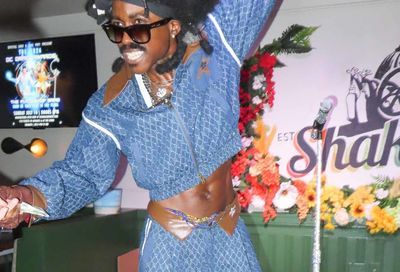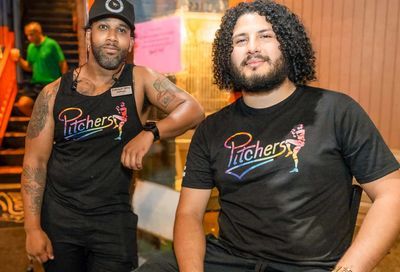Men in same-sex marriages make more than those in opposite-sex marriages, study finds
Men in same-sex marriages also have higher levels of educational attainment, according to an analysis of Census data.

A new analysis from the Pew Research Center has found that men in same-sex marriages have higher levels of education and higher annual incomes than their counterparts in opposite-sex marriages.
Pew based its analysis on data released by the U.S. Census Bureau dealing with adults over age 18 who are or have been married in the last decade.
Pew found that men in same-sex marriages have higher levels of educational attainment, with half having at least a bachelor’s degree, compared with 38% of men in opposite-sex marriages.
By comparison, the share of women in same-sex marriages who have earned a bachelor’s degree or higher is 47%, compared with 45% of women in opposite-sex marriages.
Men in same-sex marriages also have higher incomes, overall, than their counterparts in opposite-sex marriages. The median adjusted annual household income for men in same-sex marriages was roughly $132,300 in 2019. Meanwhile, the median income for men in opposite-sex marriages was $90,700.
Married women in same-sex marriages had a median income of $101,900, compared to $91,100 for women in opposite-sex marriages.
When it comes to employment, men in opposite-sex marriages are more likely to be employed than their same-sex counterparts, while the reverse is true for women.
Both men and women in same-sex marriages are more likely to be married to a spouse of a different race or ethnicity than their opposite-sex counterparts. Among men, 28% of people in same-sex marriages are intermarried, compared with 16% of those in opposite-sex marriages. Among women, 20% of those in same-sex marriages are intermarried, compared with 16% of those in opposite-sex marriages.
See also: Almost 1 in 3 Americans, and half of young adults, personally know someone who is transgender
Among men, those in same-sex marriages are slightly more likely to have been born outside the United States, with 24% being foreign-born, compared with 21% of men in opposite-sex marriages. On the other hand, 21% of women in opposite-sex marriages are foreign-born, more than twice the level of women in same-sex marriages (10%).
There are also differences in family composition between those in opposite-sex marriages and those in same-sex marriages, with those in opposite-sex marriages more likely to be living with their own children under 18.
In total, 57% of men in opposite-sex marriages are living with children, compared with only 9% of those in same-sex marriages. The gap closes for women, as 28% of women in same-sex marriages live with their childrne in their household.
See also:
Louisiana Republicans fail to override veto of bill barring transgender athletes from sports
Catholic priest resigns after being accused of using Grindr and visiting gay bars
Gay sex proves “existence of God” and discredits evolution, evangelical pastor claims
Support Metro Weekly’s Journalism
These are challenging times for news organizations. And yet it’s crucial we stay active and provide vital resources and information to both our local readers and the world. So won’t you please take a moment and consider supporting Metro Weekly with a membership? For as little as $5 a month, you can help ensure Metro Weekly magazine and MetroWeekly.com remain free, viable resources as we provide the best, most diverse, culturally-resonant LGBTQ coverage in both the D.C. region and around the world. Memberships come with exclusive perks and discounts, your own personal digital delivery of each week’s magazine (and an archive), access to our Member's Lounge when it launches this fall, and exclusive members-only items like Metro Weekly Membership Mugs and Tote Bags! Check out all our membership levels here and please join us today!
























You must be logged in to post a comment.